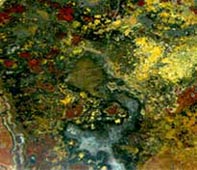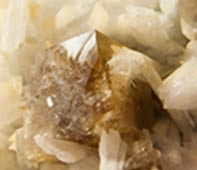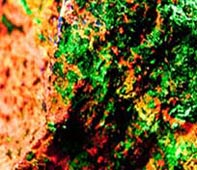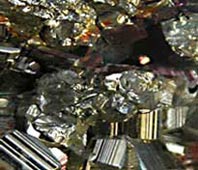




Links
(Just click on the green "+" sign to open that section.)
American Federation of Mineralogical Societies (AFMS)
http://www.amfed.org/
Midwest Federation of Mineralogical and Geological Societies (MWF)
http://www.amfed.org/mwf/
Chicagoland Gems & Minerals Association (CGMA)
http://cgma.squarespace.com/
American Land Access Association (ALAA)
The ALAA is the lobbying arm of the American Federation of Mineralogical Societies, working on behalf of rockhounds to keep public lands open and accessible to all, including the elderly and handicapped.
http://www.amlands.org/
The Geological Society of America (GSA)
http://www.geosociety.org/
International Colored Gemstone Association (ICA)
http://gemstone.org/
Society of American Silversmiths (SAS)
http://www.silversmithing.com/
The Badger Lapidary and Geological Society, Inc. — Monroe, Wi
http://www.badgerrockclub.org
Earth Science Club of Northern Illinois (ESCONI) — Northern Illinois
http://www.esconi.org
The Ventura Gem & Mineral Society, Inc. (VGMS) — Ventura, California
http://www.vgms.org
The Augustana College Geology Department is offers easy-to-use, hands-on, K-12 teacher-directed geology exploration kits for you and your classroom. The kits are loaned to local K-12 teachers, homeschool groups and Scout troops, free-of-charge, on a weekly basis.
http://www.augustana.edu/academics/majors--areas-of-study/geology/fryxell-geology-museum/programs-and-outreach
Bob's Rock Shop (Articles, more links, rock and gem info, rock and mineral ID, faceting,...). This site is wealth of information for everyone. 2 valuable pages are the rock identification page (http://www.rockhounds.com/rockshop/rockkey/index.html) and mineral identification page (http://www.rockhounds.com/rockshop/mineral_id/index.html). Scroll down the page to find a series of questions to help with identifying a certain rock or mineral.
Casoro Jewelry Safes has a wonderful page of links to other sites covering the areas of rocks, minerals and diamonds. Here you can find information, lesson plans and a whole lot more. I would like to give a shout out to Courtney and her group of Rock Stars for this informative link!
http://www.casorojewelrysafes.com/guide-to-diamonds-rocks-and-minerals/#.VgNXws5VtcA
An organization called Mineral Information Institutes offers a wide variety
of materials for Earth Science teachers, many of which
are sent to the teachers at no cost.
http://www.mii.org
If you are teaching minerals to kids, I highly recommend this website by the Mineralogical Society of America. http://www.mineralogy4kids.org/ This site covers the basics of minerals, how we use them, crystal structures and more. There is even a quiz to find out if you are just a collector or a full fledge rockhound. The most valuable page I have found is their mineral identification page. You are asked a series of questions and a list of possibilities are brought up as to what the specimen may be.
http://www.mineralogy4kids.org/mineral-identification
NASA's Jet Propulsion Laboratory is a federally funded research center, staffed and managed by the California Institute of Technology. Most of their work is in support of NASA's robotic exploration of the solar system and universe. JPL works with educators to provide tools, resources and ideas for teaching Earth science, space science, mathematics and robotics. They also run a wide range of student programs, sponsored by NASA, JPL and Caltech for students who are interested in the fields of science, technology, engineering and mathematics (STEM).
Their site is broken down into categories that serve as navigation buttons:
Students: They want to show a variety of ways to explore and learn about Earth, our solar system and the universe through games and competitions for students who take a shine to the natural sciences, computer science and engineering. There are also tips for how to pursue careers in these fields. One of them is to look at their internship page and see the opportunities offered to undergraduates, graduates and post doctoral students. They also have a limited number of internships for high school students who are 16 or older.
Teachers: NASA and JPL offer a wide range of free resources and teacher training to elementary, middle and high school teachers. They want to help teachers find the best activities and resources so they put up only items that they truly recommend. Their Staff Picks page features activities their staff uses when they visit classrooms or workshops.
Internships & Fellowships: This page lists the wide range of student and faculty programs JPL sponsors with NASA and Caltech.
Informal Education: If you work for, or are a member of, a museum, science center, library, after school program or club, this section is for you. NASA and JPL have a wide range of resources and programs for groups that want to explore science, engineering and space. They also have activities for all levels of space enthusiasts.
Video & Features: Their video collection features profiles of interns, classroom ideas for teachers and highlights of student robotic competitions. They also have written stories that provide tips, resources and announcements for teachers, as well as intern profiles.
http://www.jpl.nasa.gov/education/teachers/
Amethyst Galleries' Mineral Gallery describes over 600 mineral species (and varieties) and more than 5000 specimens. Great place for background information on minerals and their formation.
http://www.galleries.com/Minerals_By_Name
Bob's Rock Shop (Articles, more links, rock and gem info, rock and mineral ID, faceting,...): http://www.rockhounds.com/rockshop/table.html. 2 valuable pages are the rock identification page (http://www.rockhounds.com/rockshop/rockkey/index.html) and mineral identification page (http://www.rockhounds.com/rockshop/mineral_id/index.html). Scroll down the page to find a series of questions to help with identifying a certain rock or mineral.
Crystal formations, descriptions and characteristics, also includes metaphysical descriptions:
http://arkansascrystalworks.com/store-3/metaphysical-crystal-descriptions/
Geology.com This site scours the news for geology and earth science information. They find all types of articles related to the science of geology. They also have information on specific rocks, minerals and gemstones. There is an article on petrified wood that is not to be missed. http://geology.com/stories/13/petrified-wood/
http://geology.com/
MineralExpert.org This site has an extensive photo gallery of minerals, a list of their localities, many informative articles about specific minerals and tips on building a mineral collection.
http://www.mineralexpert.org/index.php
The Mineralogy Database contains 4,714 individual mineral species descriptions with links and a comprehensive image library. Visit the "What's New" section for details. Each mineral has a page linked to tables devoted to crystallography, crystal structures, X-Ray powder diffraction, chemical composition, physical and optical properties, Dana's New classification, Strunz classification, mineral specimen images, and alphabetical listings of mineral species. There also are extensive links to other external sources of mineral data and information.
http://webmineral.com/
Virtual Museum of Geology This site is under construction but the start of it is still worth seeing. Its resource section is easy to manuever. Pick the state and find what you are looking for whether it be a club, rock shop or an attraction. It is a great place to plan a trip. There is also a Geological Time Scale that no teacher should miss.
http://www.virtualmuseumofgeology.com/
Ganoskin Project — Ganoksin is dedicated to serving the information needs of the world's jewelers.
http://www.ganoksin.com/index.htm
Society of American Silversmiths (SAS)
http://www.silversmithing.com/
Copyright © 2001-2020 • Chicago Rocks & Minerals Society • All Rights Reserved • Contact Us • Sitemap
